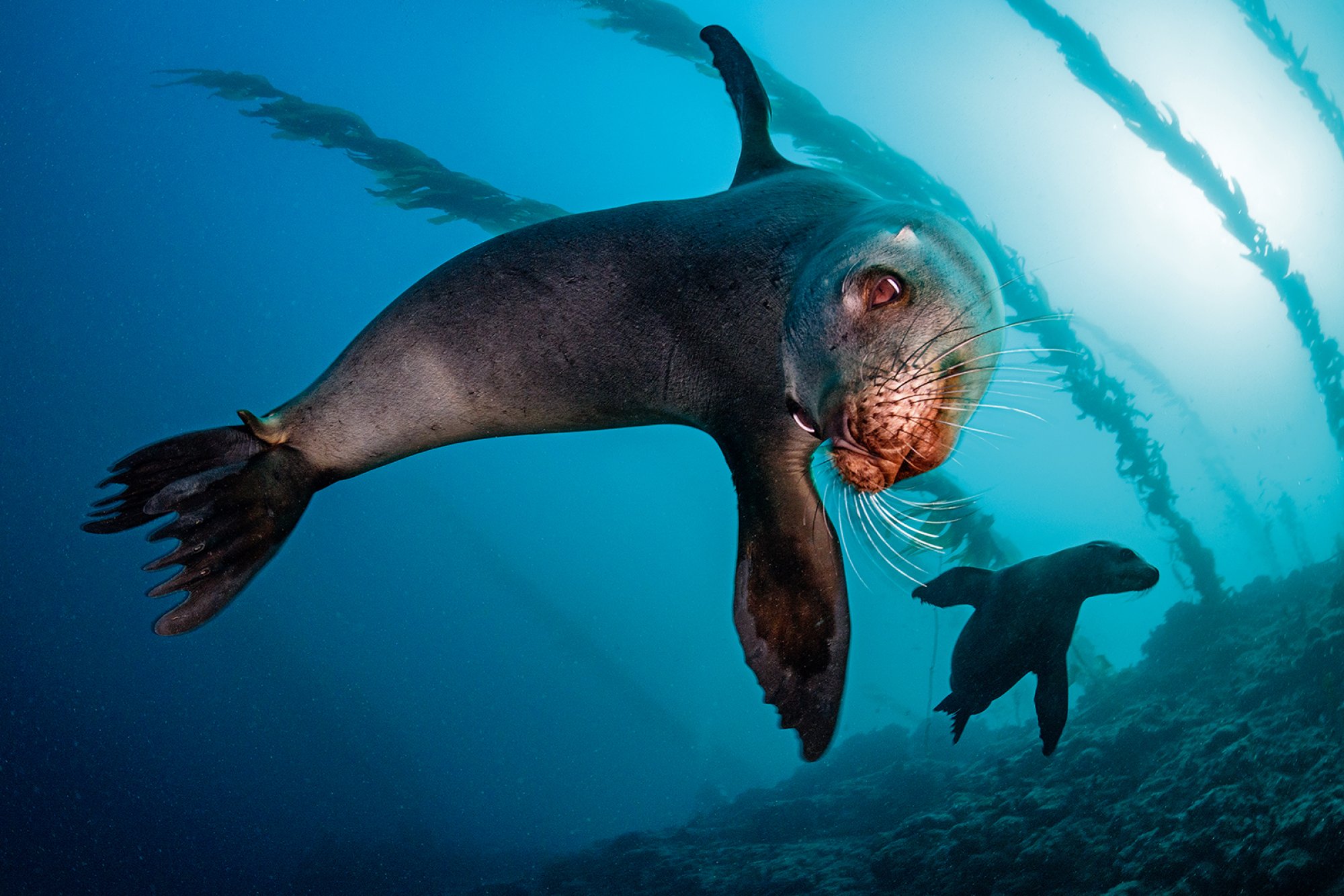Diving with Sea Lions
Intelligent, Loud, and Playful
Sea lions are pinnipeds that are easily recognizable by their external ear flaps, cute, pointy nose, long, puffed up chest, and their ability to walk on all fours. Some of the more popular sea lion species are the California sea lion and the Steller sea lion. These fast, agile swimmers can reach up to 30 knots underwater and are very curious about the world around them. In fact, sea lions are not afraid of scuba divers in the least and have been known to buzz right around a group of divers, blow bubbles at them, and even chewing on their snorkels and fins.
Sea lions can be encountered in almost every ocean from tropical to subarctic waters, in both the northern and southern hemispheres, except the northern Atlantic Ocean. They prefer coastal waters and are commonly seen while scuba diving. A favorite activity amongst sea lions is laying out and basking in the sun. In fact, you can get quite close to some large colonies of sea lions as they lay out on large rocks, the beach, and even channel marker buoys. If diving with these loud, playful swimmers is on your bucket list, check out the dive site map below to see where they are commonly sighted and go diving with sea lions today!
Dive Sites with this Animal View more on map

★★★★☆ South Point - San Pedro
Exposed dive site on the south tip of San Pedro de Nolasco. Can have strong currents, better for advanced and expert divers. Deep drop off and outside pinnacle with large pelagics at times.

★★★★★ North Point - San Pedro
North Point is located on the northern tip of San Pedro and is a fantastic dive site for beginners and advanced divers. Due to its location at the tip, the site is exposed to currents at times and offers pelagic species.

★★★★☆ Cabo San Lucas
Cabo offers diving for all levels of divers and many different types of adventures from easy, calm aquarium like shore diving to deeper water diving off the coast at places like Gordo Banks that offer the possibility of large pelagic sightings like orcas, humpbacks, hammerheads, tuna, and more!

★★★★☆ HMCS Yukon (Wreck)
The Yukon lives in an area known as ’Wreck Alley’ and is San Diego’s most popular wreck dive and one of the largest wrecks in all of California at 366 feet long! Sitting just off Mission Bay, the Yukon is an advanced dive as it sits in 100 plus feet of water.

★★★★★ Kicker Rock / Léon Dormido, San Cristobal, Galapagos
León Dormido, a gigantic rock formation rising out of the ocean, is a “sleeping lion.” The remains of a lava cone split in two, it is also known as “Kicker Rock.” Located off the coast of the island of San Cristóbal.

★★★★★ Los Islotes
Once referred to as the ’aquarium of the world’ by Jacques Cousteau, diving in the waters surrounding La Paz, Mexico is just that: so full of diverse marine life it’s like diving in an aquarium. Los Islotes boasts great rock formations and tons of marine life but most divers come here for the sea lions.
